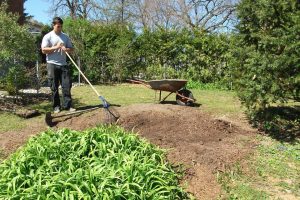When you bring a baby into the world, you want to give it the best chance of success. You control the controllables, and do your best to create conditions that will allow your child to survive and thrive.
Now sub the baby mentioned above for lawn. Without being weird or creepy, the statements still stand. And while, at least hopefully, your lawn won’t have you up and out of bed to feed it three times a night, you still want to treat it with care and do everything you can to allow it to be its best.
Unlike children, grass can be greatly affected by the season in which it comes into the world. Different grasses have different preferences for when they ideally like to be planted, and it all comes down to one simple thing – peak growing periods.

Peak Growing Periods Explained
When we talk about a peak growing period, we’re referring to the time of year that a particular plant is growing at its quickest. More often than not, this period will fall in seasons that aren’t extreme – i.e. the transitional seasons of spring and autumn.
For ease of explanation, grasses can be divided into two groups – cool season and warm season. The names do indeed give it away. Cool season grasses prefer more temperate climates, while warm season grasses enjoy hotter tropical/sub-tropical weather. This is also reflected in their peak growing seasons.
Cool season grasses traditionally grow at their quickest in late autumn/early spring, either side of winter. Warm season grasses, however, enjoy the periods either side of summer – late spring and early autumn.
Knowing these periods for your choice of lawn seed is vital to its success. You want to sow your seed just before its peak growing period starts, which will allow it to germinate just in time to capitalise on the perfect conditions for growth.
Why Not Plant In Summer or Winter?
The extreme conditions that winter and summer experience can severely affect the ability of your grass to grow. If you sow seed in winter, the cold may cause the seed or germinated grass to go into a state of dormancy, leading to a lack of an established root system and a patchy lawn down the track. In summer, the heat stress experienced by the new grass will result in browning off, and the amount of water required to keep your new lawn growing will be huge.
While it is possible to grow certain grasses in both seasons, they will never perform to their peak. The only exception to the rule is for those that find themselves in the north of the country, where four distinct seasons are replaced by two – wet and dry. In this case, it is more appropriate to sow in times that provide consistent (but not excessive) rainfall.

Which Grasses Are Which?
Australia being the generally hot place that it is, the most popular varieties of grass are those that fall into the warm season category. Australian lawn staples such as Buffalo, Couch, Zoysia and Kikuyu are all preferential to warmer climates, and have their peak growing periods either side of summer.
While it’s certainly not as simple as drawing a line across Australia and saying “here is fine”, these grasses are usually able to be grown anywhere north of the warmer regions of Victoria.
Cool season varieties have the benefit of being extremely popular in Europe and North America, so despite the lack of use in Australia, you still have a wide variety to choose from if you require something slightly more cold resistant. Fescue, Ryegrass and Bluegrass are all excellent choices in a cool season lawn.
The main indicator that you require a cool season lawn is the presence of frosts over winter. In terms of Australia, these areas include Southern Victoria, Tasmania, and much of the mountainous terrain of Victoria and New South Wales.
The factors that dictate when to plant your new lawn are many and varied – grass choice, location, time frame, weather – and can be confusing to the best of us. For expert advice on how to best grow your particular patch, contact a McKays seed specialist today.

 FREE SHIPPING ON ORDERS OVER $50
FREE SHIPPING ON ORDERS OVER $50